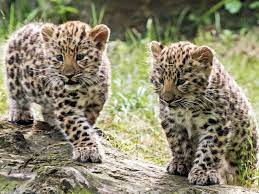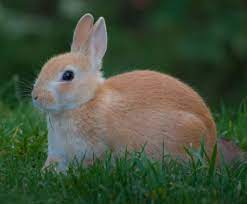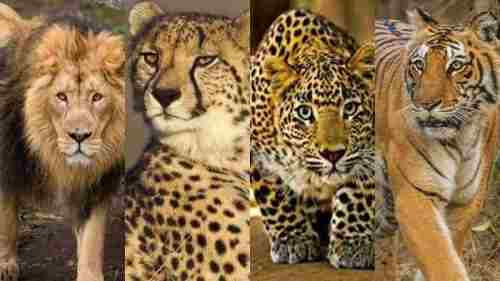Embark on a journey to uncover the captivating biodiversity that graces the landscapes of Korea. The Animals of Korea have long been overshadowed by the country’s urban achievements, but their presence paints a truly enchanting picture. Whether nestled in the embrace of rugged mountains or along the serene coastlines, Korea’s wildlife adds a layer of allure to its natural beauty.
Table of Contents
From the elusive Amur leopard and the regal Siberian tiger, both teetering on the edge of existence within dense forests, to the vibrant avian community featuring the Korean magpie and the mandarin duck, which grace the skies with their colorful feathers and melodies. Coastal regions host the playful otters and the Indo-Pacific bottlenose dolphins, captivating both locals and visitors alike.
As conservation endeavors gain momentum, a collective effort emerges from organizations and communities to safeguard these remarkable species and the habitats they call home. Embark on this virtual odyssey, an exploration of the often underestimated realm of Animals in Korea, shedding light on the pressing call for their protection amid the relentless tide of modernization.
List of Animals in Korea
Korean Water Deer
Amur Leopard
Korean Marten
Korean Magpie
Red-crowned Crane
Eurasian Oystercatcher
Korean Four-lined Snake
Korean Green Tree Frog
Korean Field Mouse
Nutria
European Rabbit
Siberian Weasel
Korean Seahorse
Yellowtail Kingfish
Korean Horseshoe Crab
Importance of Biodiversity:
Biodiversity stands as the cornerstone of a healthy and resilient ecosystem, providing a multitude of ecological, economic, and social benefits. In the context of Korea, the importance of biodiversity cannot be overstated. A diverse range of plant and animal species ensures a balanced ecosystem where each organism plays a vital role in maintaining the delicate equilibrium.
This diversity not only contributes to cleaner air, water, and soil but also underpins crucial industries like agriculture and pharmaceuticals. Moreover, the intricate interplay of species creates a robust defense against environmental perturbations, enhancing the region’s ability to adapt to changing conditions. Recognizing the intrinsic value of biodiversity, conservation efforts in Korea have gained momentum, aiming to preserve its rich natural heritage for future generations.
Unique Ecosystems in Korea:
Korea’s topography, ranging from towering mountains to pristine coastlines, has nurtured an array of unique ecosystems. The Demilitarized Zone (DMZ) acts as an accidental sanctuary, fostering diverse habitats due to limited human interference. Iconic is the temperate forests of Seoraksan and the vibrant marine life around Jeju Island.
The wetlands of Suncheon Bay exhibit an exquisite blend of terrestrial and aquatic ecosystems. These varied landscapes provide niches for a wide array of plant and animal species, some of which are endemic to the Korean Peninsula. Preserving these distinctive ecosystems is essential not only for safeguarding local biodiversity but also for advancing scientific knowledge and promoting ecotourism.
Korean Water Deer:

The Korean Water Deer, a remarkable inhabitant of Korea’s wetlands and grassy regions, possesses a unique allure. Distinguished by its striking tusks and aquatic preferences, this ungulate species has perfectly adapted to its surroundings. However, the challenges of habitat loss and fragmentation threaten its existence, necessitating immediate conservation actions. Preserving the Korean Water Deer is not only essential for the species itself but also for maintaining the delicate ecological balance of its habitat.
Amur Leopard:

The rare and elusive Amur Leopard graces the Korean Peninsula with its presence, embodying the region’s wilderness and mystery. With its captivating rosette-patterned coat, it navigates the remote forests of Korea. Unfortunately, this exquisite feline faces numerous threats, including habitat loss and poaching.
As one of the most endangered big cat species, the Amur Leopard’s survival hinges on robust conservation efforts that focus on protecting its habitats and addressing the illegal wildlife trade. Safeguarding the Amur Leopard not only contributes to the biodiversity of Korea but also stands as a testament to the country’s commitment to preserving its natural heritage.
Korean Marten:

In the enchanting woodlands of Korea resides the Korean Marten, an elusive mustelid species that adds an air of mystery to its habitat. With its slender frame and russet fur, it navigates the forest understory with ease. However, the encroachment of human activities and habitat alteration have cast a shadow on the survival of this captivating creature.
Ensuring the persistence of the Korean Marten requires concerted efforts in habitat conservation and raising awareness about its ecological role. By addressing the challenges that threaten its existence, we can secure a future where this remarkable species continues to grace Korea’s forests with its presence.
Korean Magpie:

The Korean Magpie, with its striking black and white plumage, occupies a special place in both the landscape and culture of Korea. From urban centers to rural landscapes, this intelligent and adaptable bird is a common sight. Beyond its ecological role, the Korean Magpie has woven itself into the cultural fabric, finding a place in folklore and myths.
Revered for its intelligence, it symbolizes both wisdom and playfulness. Recognizing the cultural significance of the Korean Magpie alongside its ecological importance is crucial for fostering a deeper connection between people and nature, ultimately contributing to the conservation of not just a species, but a meaningful part of Korea’s heritage.
Red-crowned Crane:

The Red-crowned Crane, an elegant and regal bird, graces Korea’s wetlands and rice paddies. Its graceful presence carries cultural and ecological significance, symbolizing longevity and harmony. However, the Red-crowned Crane faces numerous challenges, including habitat loss and hunting.
Conserving this majestic species requires collaborative efforts to protect and restore its habitats, as well as raising awareness about the importance of safeguarding these charismatic birds for future generations. By ensuring the survival of the Red-crowned Crane, we not only contribute to the health of Korea’s ecosystems but also preserve a symbol of grace and resilience that has captivated generations.
Eurasian Oystercatcher:

Along Korea’s coastlines, the Eurasian Oystercatcher stands as a charismatic ambassador of coastal ecosystems. Recognizable by its vibrant orange bill and distinct calls, this bird plays a vital role in maintaining the health of marine environments. As intertidal zones face increasing threats from human activities and development, safeguarding the habitats of the Eurasian Oystercatcher becomes paramount.
By doing so, we protect not only a unique and enchanting species but also contribute to the overall conservation of Korea’s coastal biodiversity. The Eurasian Oystercatcher serves as a reminder that these coastal ecosystems are intricate and delicate, deserving of our care and protection.
Korean Four-lined Snake:

The Korean Four-lined Snake, with its subtle beauty and non-threatening nature, inhabits the grasslands and forests of Korea. Often overlooked, this snake plays a vital role in controlling rodent populations, contributing to the ecological balance of its habitat.
As urbanization and habitat fragmentation continue to threaten its existence, shedding light on the importance of the Korean Four-lined Snake’s ecological role is essential. By promoting awareness and implementing conservation measures, we can ensure that this unassuming yet crucial species continues to fulfill its role within the intricate web of Korea’s ecosystems.
Korean Green Tree Frog:

The Korean Green Tree Frog, with its vivid green coloration, adds a touch of vibrancy to Korea’s natural landscapes. Found amidst lush vegetation, this amphibian serves as an indicator of environmental health. However, its habitats face pressure from urban expansion and habitat degradation.
Raising awareness about the ecological importance of the Korean Green Tree Frog is vital for its preservation. By protecting its habitats and promoting responsible land use practices, we can secure a future where the Korean Green Tree Frog continues to enchant us with its presence and contribute to the health of Korea’s ecosystems.
Korean Field Mouse:

The unassuming Korean Field Mouse, though often unnoticed, plays a pivotal role in the intricate tapestry of Korea’s ecosystems. As a key player in seed dispersal and prey-predator relationships, this seemingly ordinary rodent contributes to the balance and health of its habitat.
With a habitat range spanning grasslands and forests, the Korean Field Mouse’s role is far-reaching. Recognizing its importance in maintaining ecosystem dynamics emphasizes the interconnectedness of all species. As we strive to conserve Korea’s biodiversity, the Korean Field Mouse serves as a reminder that even the smallest creatures play significant roles in shaping the natural world.
Nutria:

The introduction of the Nutria to Korea’s aquatic habitats brings both ecological complexities and challenges. As a non-native species, its impact on local ecosystems requires careful monitoring and management. Balancing the potential disruptions caused by the Nutria with the need to protect native flora and fauna calls for a collaborative approach. By understanding its interactions with the environment and implementing responsible management strategies, we can mitigate its effects and strive for a harmonious coexistence within Korea’s aquatic ecosystems.
European Rabbit:

The European Rabbit, introduced for farming purposes, has established a presence in Korea’s landscapes. As their population increases, concerns arise about their potential impact on native species and habitats. Understanding the interactions between the European Rabbit and local flora and fauna is crucial for managing their presence. By implementing measures to prevent ecological imbalances and minimize their impact, we can ensure that the European Rabbit coexists in harmony with Korea’s unique ecosystems.
Siberian Weasel:

The Siberian Weasel, with its russet coat and elusive nature, finds a home in Korea’s forests. This carnivorous species contributes to the delicate balance of predator-prey relationships, helping control pest populations.
While the Siberian Weasel is relatively adaptable, preserving its habitat is vital for the health of Korea’s ecosystems. By recognizing its role and advocating for habitat conservation, we can contribute to the protection of not only the Siberian Weasel but also the broader ecological integrity of Korea’s woodlands.
Korean Seahorse:

Korea’s coastal waters hold a captivating secret: the Korean Seahorse. With its intricate appearance and role as a symbol of marine diversity, this enchanting creature contributes to the rich tapestry of underwater life.
As coastal environments face pressures from pollution and habitat degradation, protecting the habitats of the Korean Seahorse becomes paramount. By preserving the health of these ecosystems, we ensure the survival of this charismatic species and reaffirm our commitment to the conservation of Korea’s marine biodiversity.
Yellowtail Kingfish:

The Yellowtail Kingfish, a prized marine species in Korean waters, serves as both a traditional resource and a modern aquaculture product. Balancing the demand for Yellowtail Kingfish with sustainable management practices is crucial for the longevity of this species.
By understanding its role in local ecosystems and promoting responsible fishing and aquaculture practices, we can ensure that the Yellowtail Kingfish continues to support both traditional livelihoods and modern industries while contributing to the health of Korea’s marine environments.
Korean Horseshoe Crab:

The ancient Korean Horseshoe Crab, with its unique appearance, holds ecological importance in Korea’s coastal ecosystems. Its eggs provide essential nourishment for migratory birds during their long journeys. Recognizing the role of the Korean Horseshoe Crab in these intricate migratory cycles underscores the need for conservation efforts.
By protecting its habitats and advocating for responsible coastal management, we can secure the future of this fascinating creature and contribute to the preservation of Korea’s coastal biodiversity.
Historical and Cultural Significance of Animals:
Throughout Korea’s history, animals have held profound cultural and symbolic significance. Traditional folklore, art, and rituals are steeped in animal imagery, reflecting the deep connection between humans and the natural world. The Korean zodiac, for instance, is composed of animals, each believed to influence traits and destinies. Animals also find their place in religious narratives and indigenous beliefs, highlighting their spiritual importance.
Additionally, animals have influenced traditional practices such as agriculture and farming, playing roles in plowing fields, transportation, and even culinary traditions. As modernization advances, preserving this cultural bond with animals becomes vital, ensuring that these historical and cultural connections remain intact and continue to enrich the Korean societal fabric.
Wildlife Conservation and Protection:
Wildlife conservation and protection in Korea have gained momentum as awareness of the fragility of local ecosystems grows. Efforts span from preserving endangered species like the Amur leopard and the Red-crowned crane to restoring critical habitats like wetlands and forests.
Collaborative initiatives involving government bodies, NGOs, and local communities emphasize the importance of safeguarding biodiversity. Conservation measures also extend to combating poaching, habitat destruction, and illegal wildlife trade. The interconnectedness of species and ecosystems underscores the urgency of these endeavors to maintain the delicate balance of Korea’s natural world.
Traditional and Cultural Relationships with Animals:
Korea’s historical and cultural tapestry is interwoven with its relationship with animals. From the Korean zodiac to traditional farming practices, animals have held profound symbolism and practical roles.
Folklore and art depict animals as integral characters, reflecting the deep connection between humans and the natural world. The spiritual significance of animals in indigenous beliefs further solidifies this bond. Preserving these cultural connections is crucial as modernization progresses, ensuring that the wisdom and values associated with animals continue to enrich Korean heritage.
Modern Human-Animal Interactions:
In the modern era, the interactions between humans and animals in Korea are evolving. Urbanization and changing lifestyles influence the dynamics of these interactions, ranging from pets and livestock to ecotourism. Companion animals like dogs and cats now play integral roles in many households, reflecting changing attitudes toward animal welfare.
Conservation-focused ecotourism initiatives highlight the economic value of wildlife, promoting both appreciation and protection. However, these interactions also bring challenges, such as conflicts between wildlife and human activities. Balancing the benefits and potential conflicts in these relationships requires thoughtful planning and sustainable practices.
Future Outlook for Korean Wildlife:
The future of Korean wildlife stands at a critical juncture. While challenges like habitat loss, climate change, and invasive species persist, there is growing momentum for conservation. Continued investment in habitat restoration, species protection, and education can pave the way for a more resilient future.
Collaborative efforts among stakeholders will be essential to address these challenges and ensure the survival of iconic species. The integration of scientific research, technological innovation, and community engagement offers hope for the sustained coexistence of Korea’s wildlife and its human population.
Final Words:
Korea’s wildlife is a tapestry woven with ecological, cultural, and social threads. As the country advances, recognizing the intrinsic value of its diverse ecosystems and the role of animals within them becomes paramount. Preserving Korea’s unique biodiversity safeguards not only the natural balance but also cultural traditions and future generations’ heritage.
By embracing responsible conservation practices, nurturing traditional relationships, and adapting to evolving human-animal dynamics, Korea can secure a harmonious future where both its people and its wildlife thrive. The journey toward balanced coexistence is ongoing, with the collective efforts of society serving as the guiding compass for Korea’s wildlife conservation journey.
Reference:
- https://www.korea.net/NewsFocus/Society/view?articleId=150470
- https://www.cbc.ca/cbckids/olympics/pyeongchang2018/blog/learn-about-the-korean-zodiac
- https://www.gaok.or.kr/global/main/contents.do?menuNo=300020
A motivated philosophy graduate and student of wildlife conservation with a deep interest in human-wildlife relationships, including wildlife communication, environmental education, and conservation anthropology. Offers strong interpersonal, research, writing, and creativity skills.










